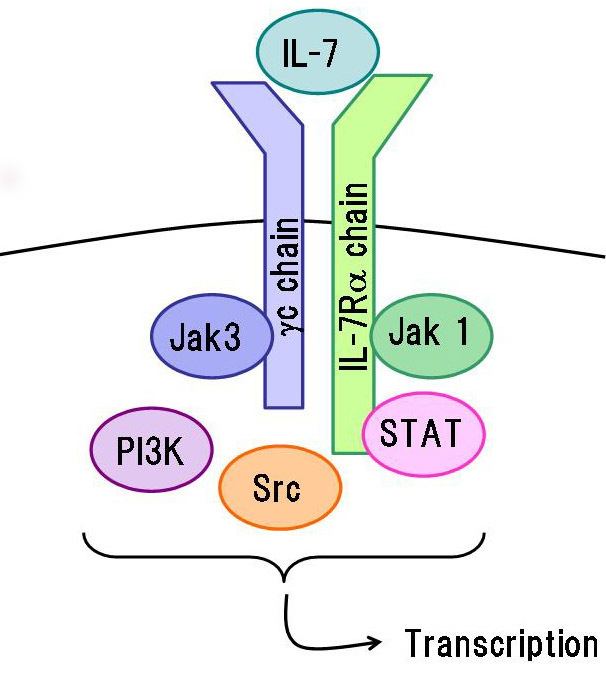Symbol IL7R Entrez 3575 OMIM 146661 | Alt. symbols CD127 HUGO 6024 RefSeq NM_002185 | |
 | ||
The interleukin-7 receptor is a protein found on the surface of cells. It is made up of two different smaller protein chains - i.e. it is a heterodimer, and consists of two subunits, interleukin-7 receptor-α (CD127) and common-γ chain receptor (CD132). The common-γ chain receptors is shared with various cytokines, including interleukin-2, -4, -9, and -15. Interleukin-7 receptor is expressed on various cell types, including naive and memory T cells and many others.
Contents
Function
Interleukin-7 receptor has been shown to play a critical role in the development of immune cells called lymphocytes - specifically in a process known as V(D)J recombination. This protein is also found to control the accessibility of a region of the genome that contains the T-cell receptor gamma gene, by STAT5 and histone acetylation. Knockout studies in mice suggest that blocking apoptosis is an essential function of this protein during differentiation and activation of T lymphocytes. Functional defects in this protein may be associated with the pathogenesis of severe combined immunodeficiency (SCID).
Diseases
Several diseases are associated with Interleukin-7 receptor including T-cell acute lymphoblastic leukaemia, multiple sclerosis, rheumatoid arthritis and juvenile idiopathic arthritis.
